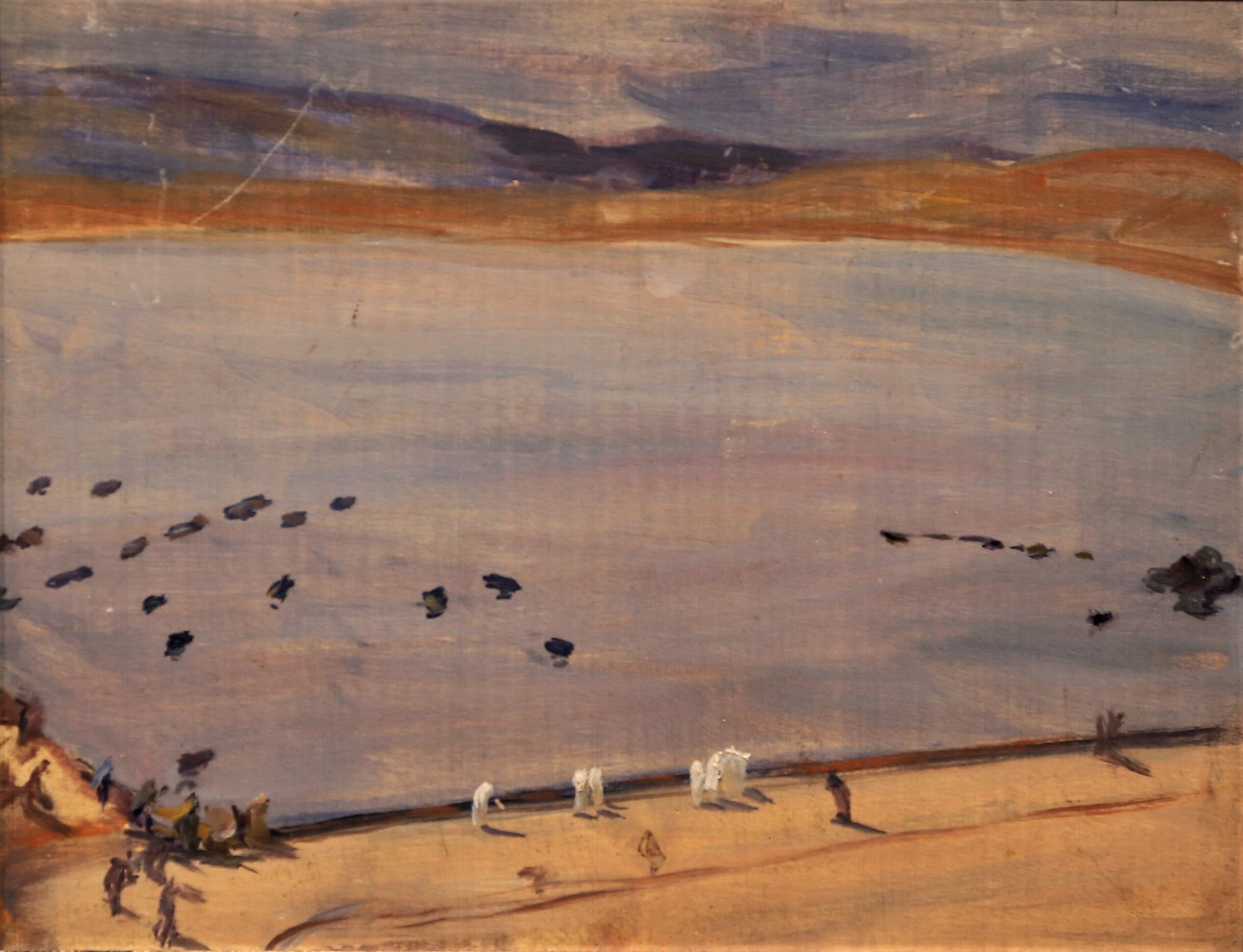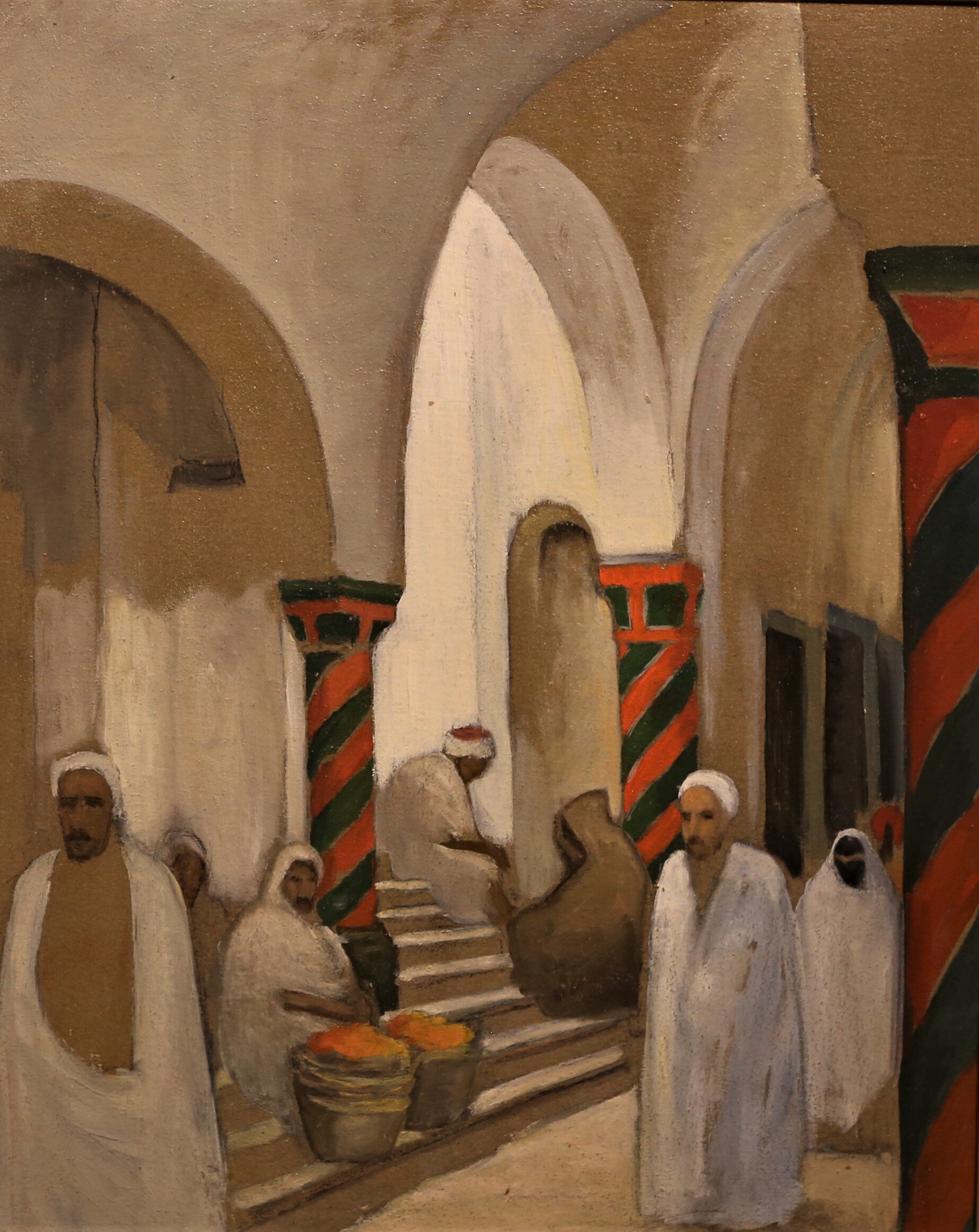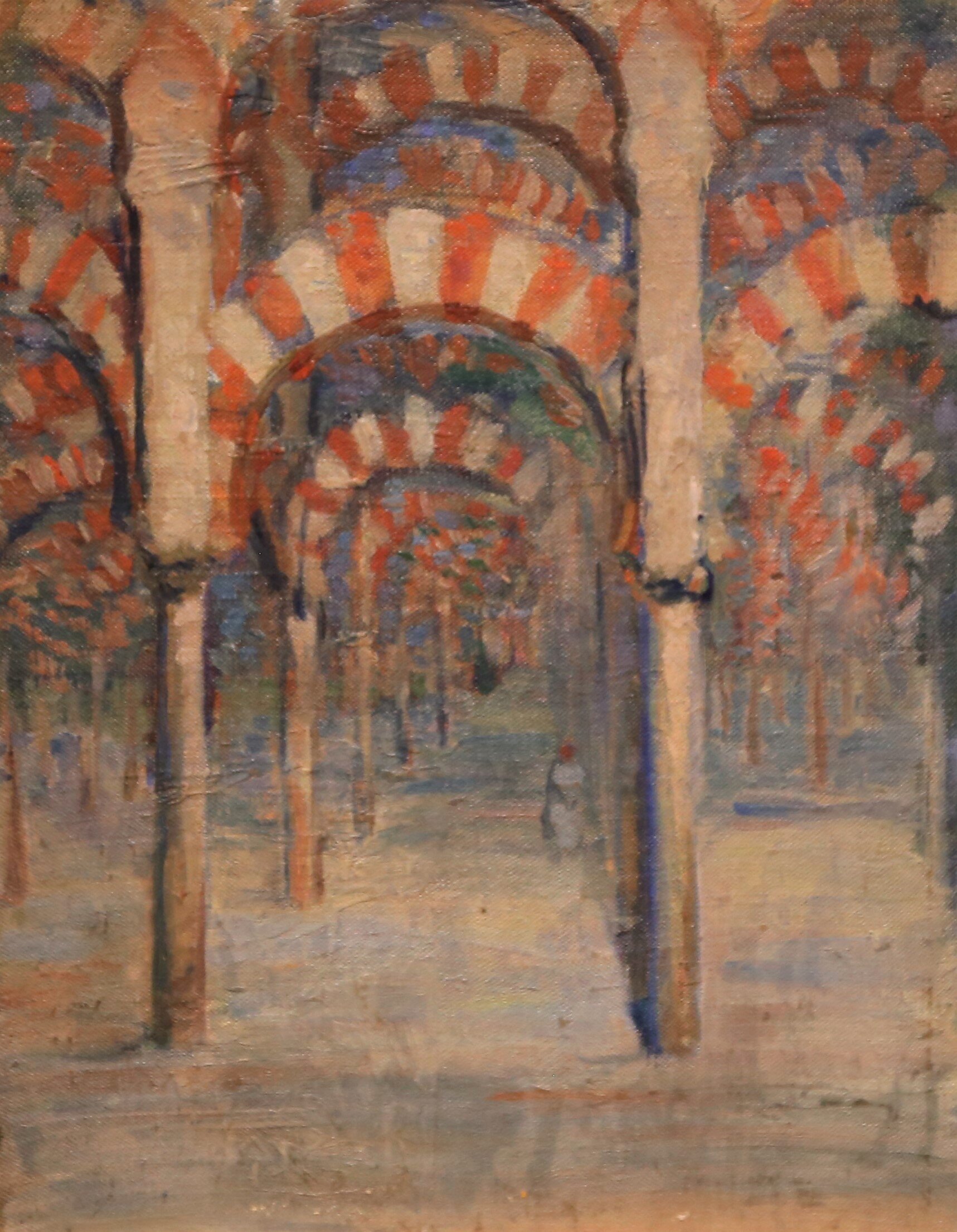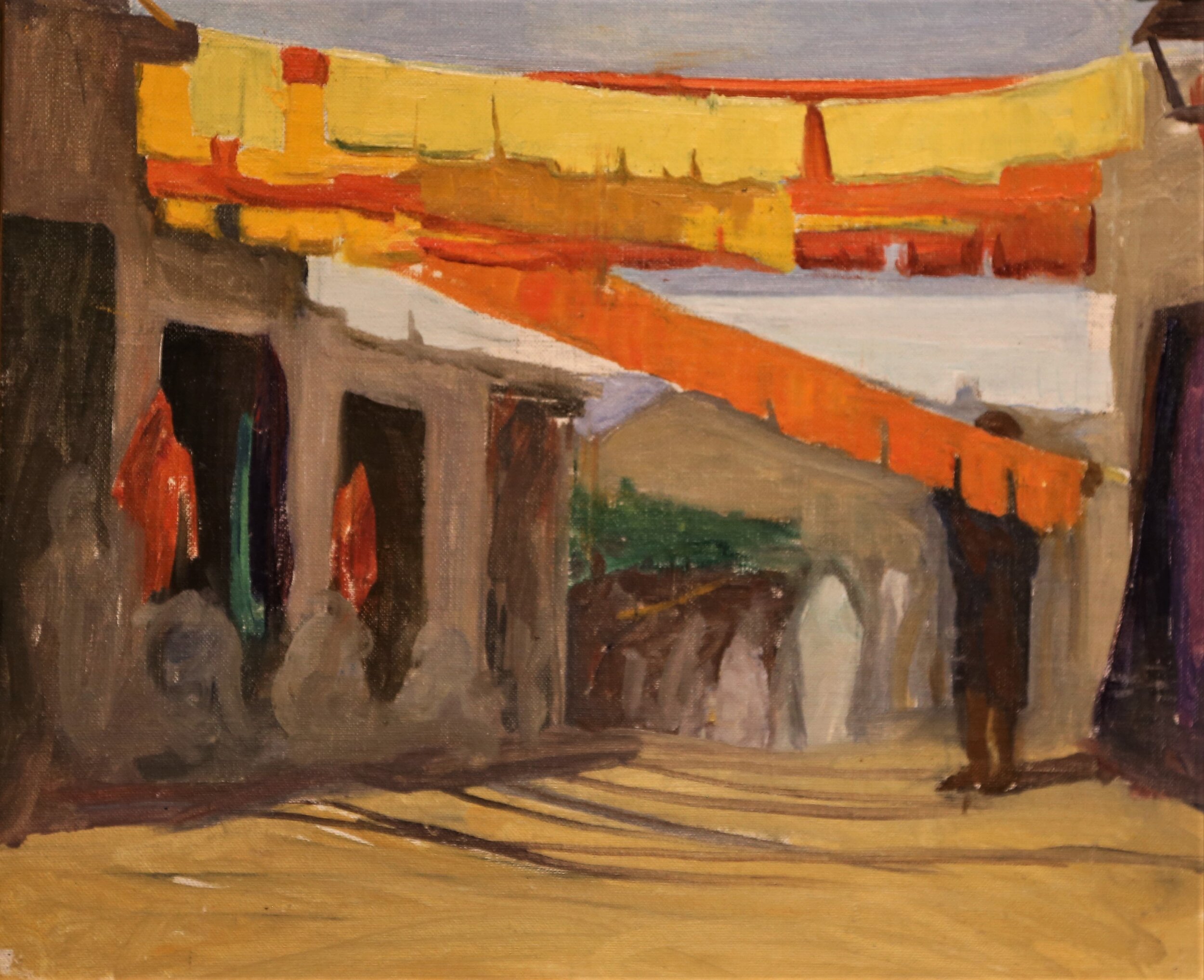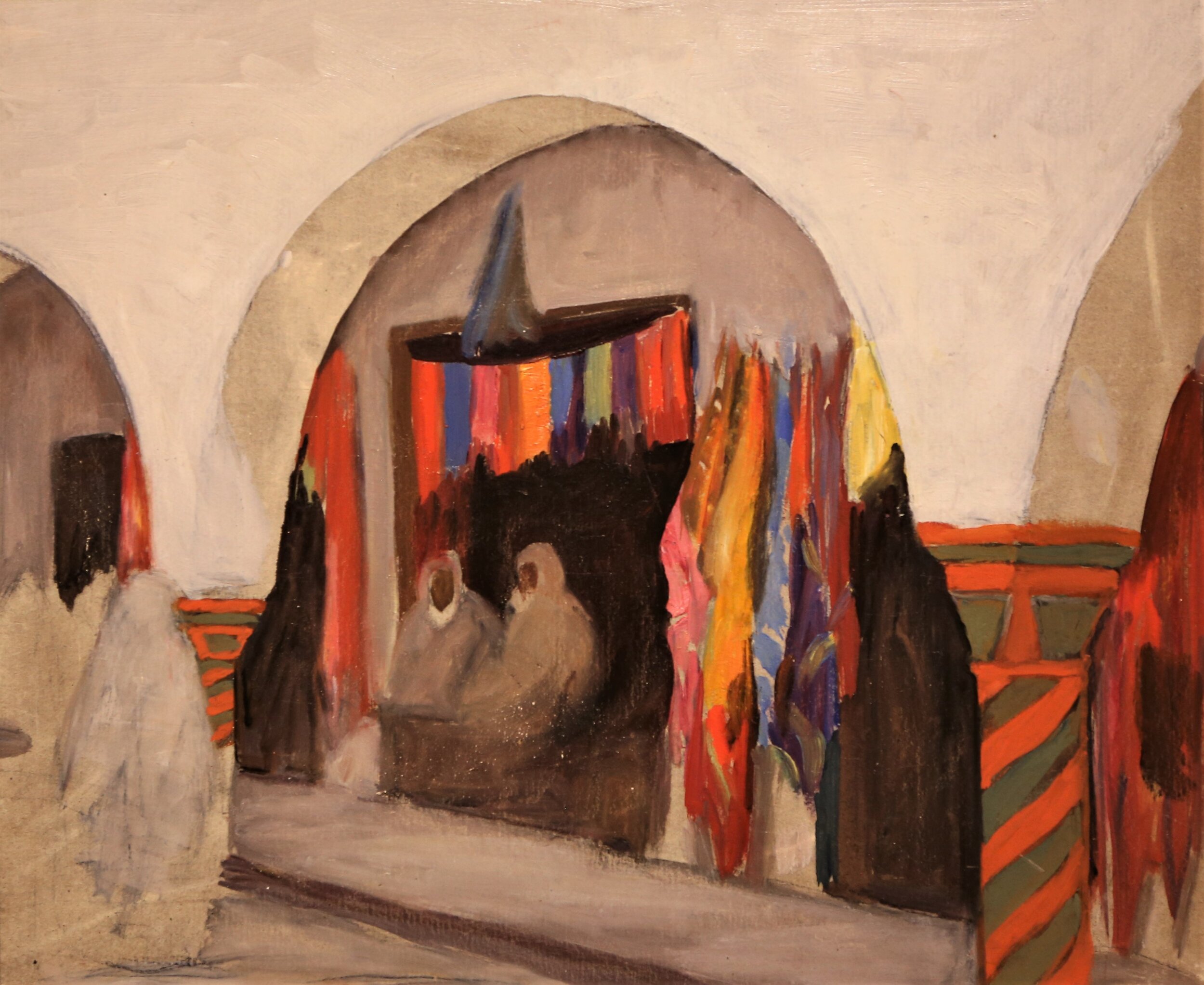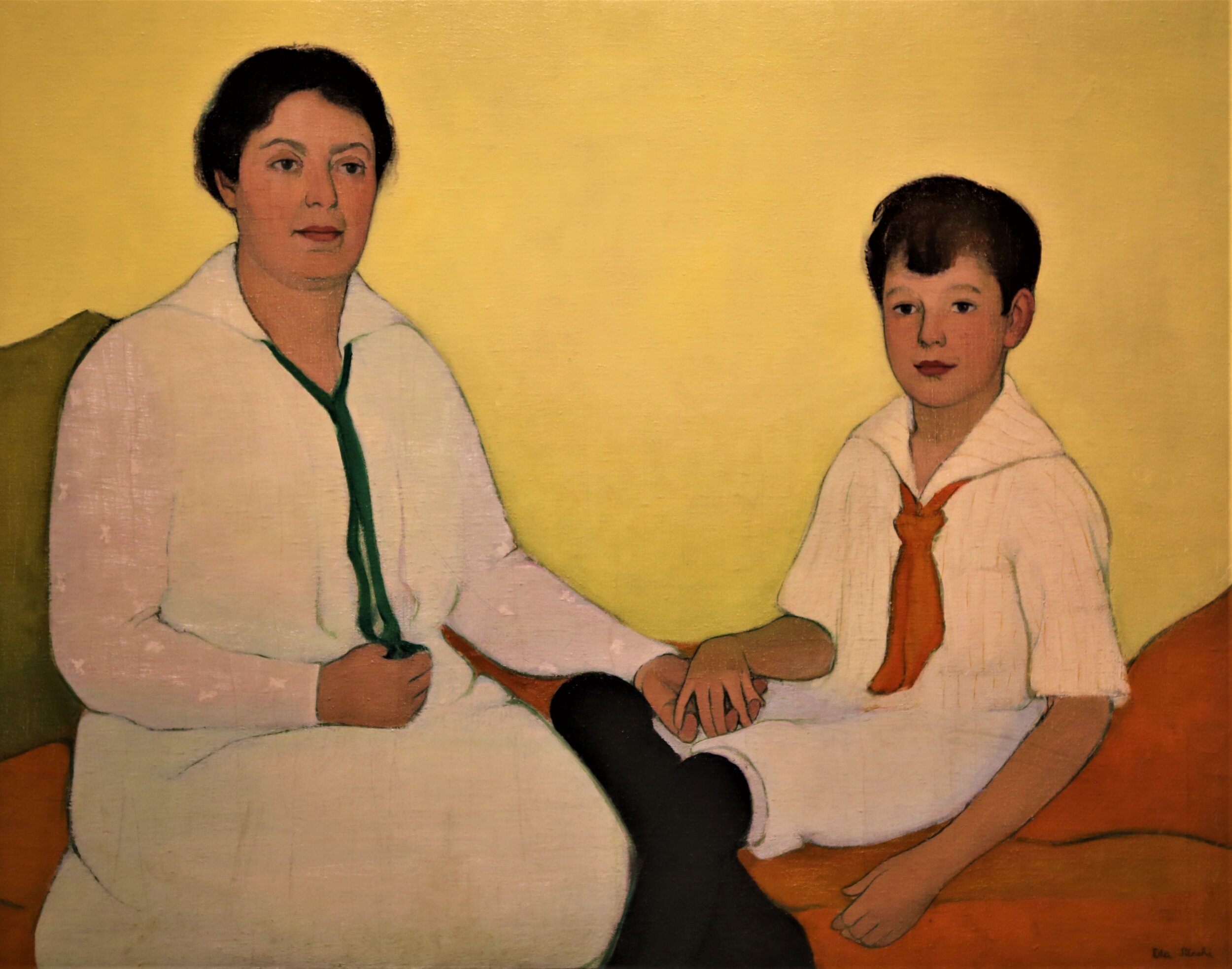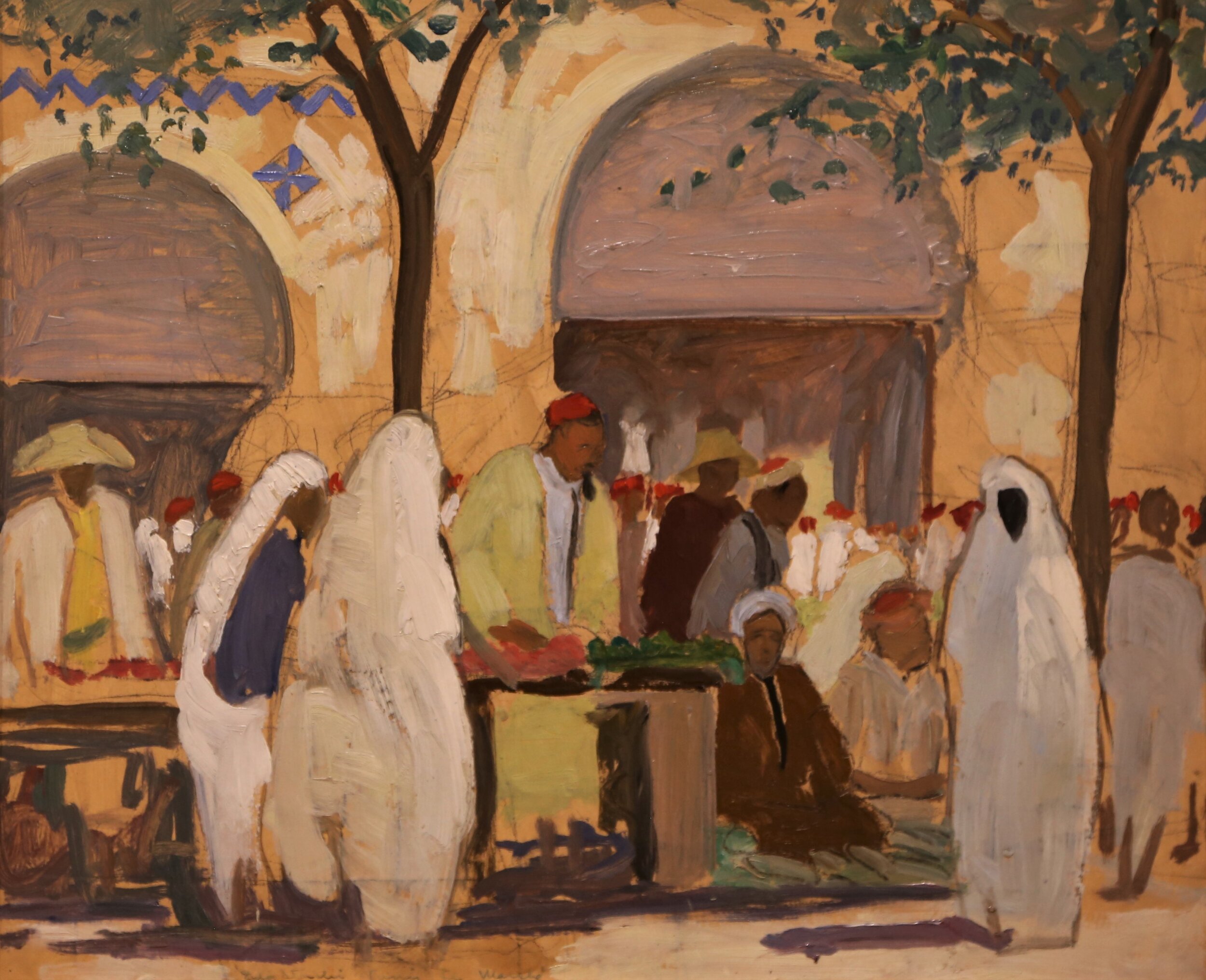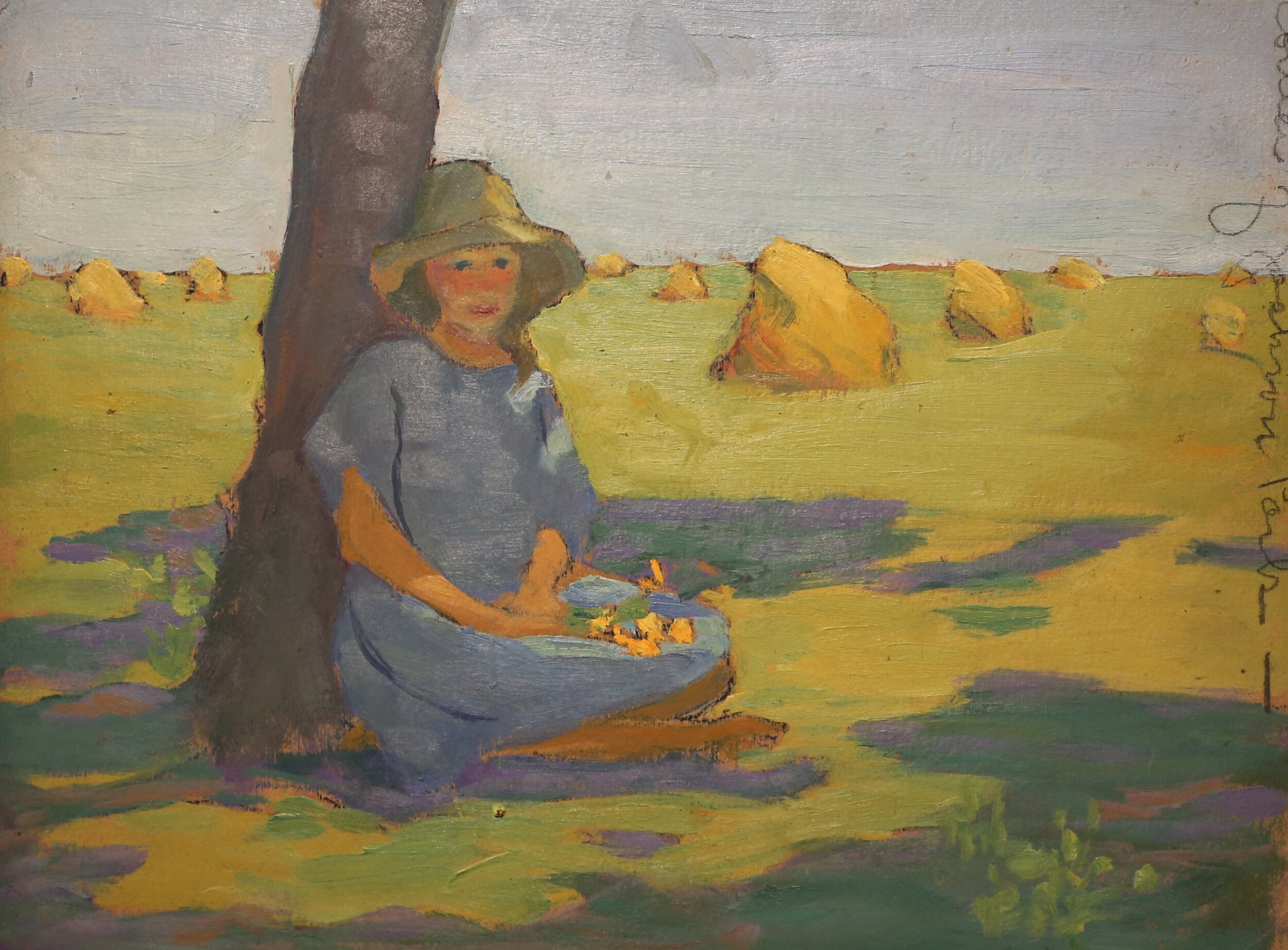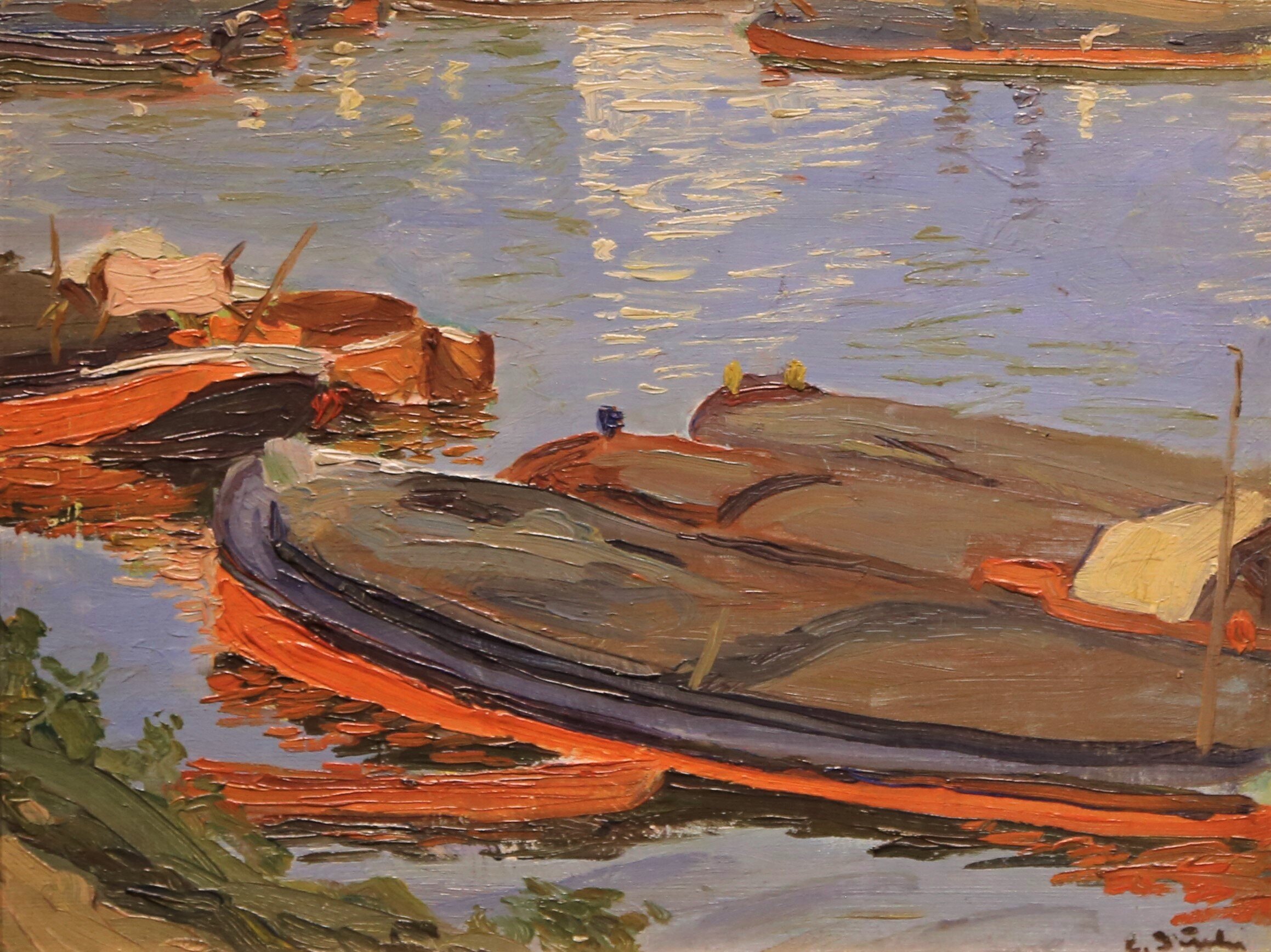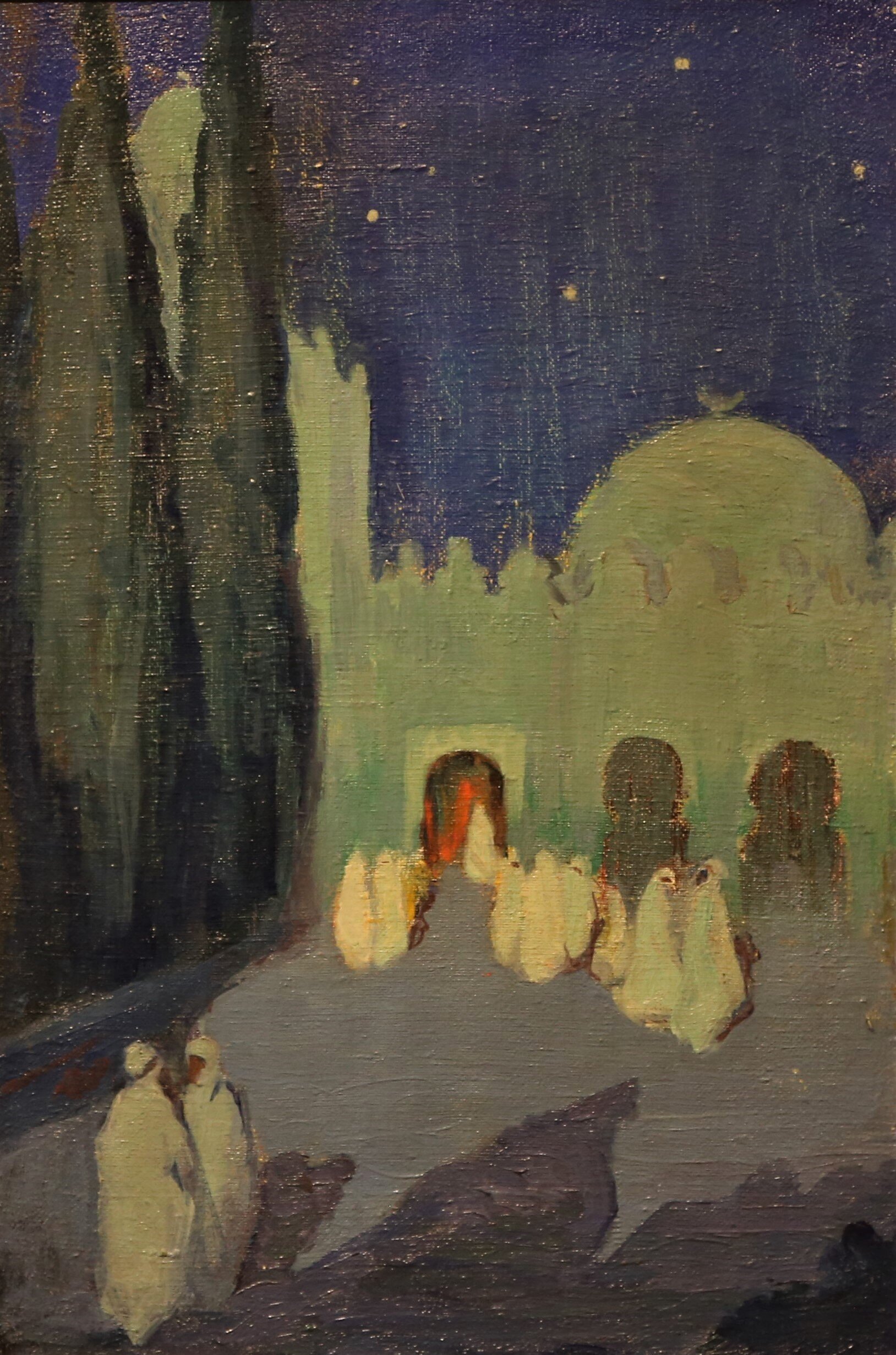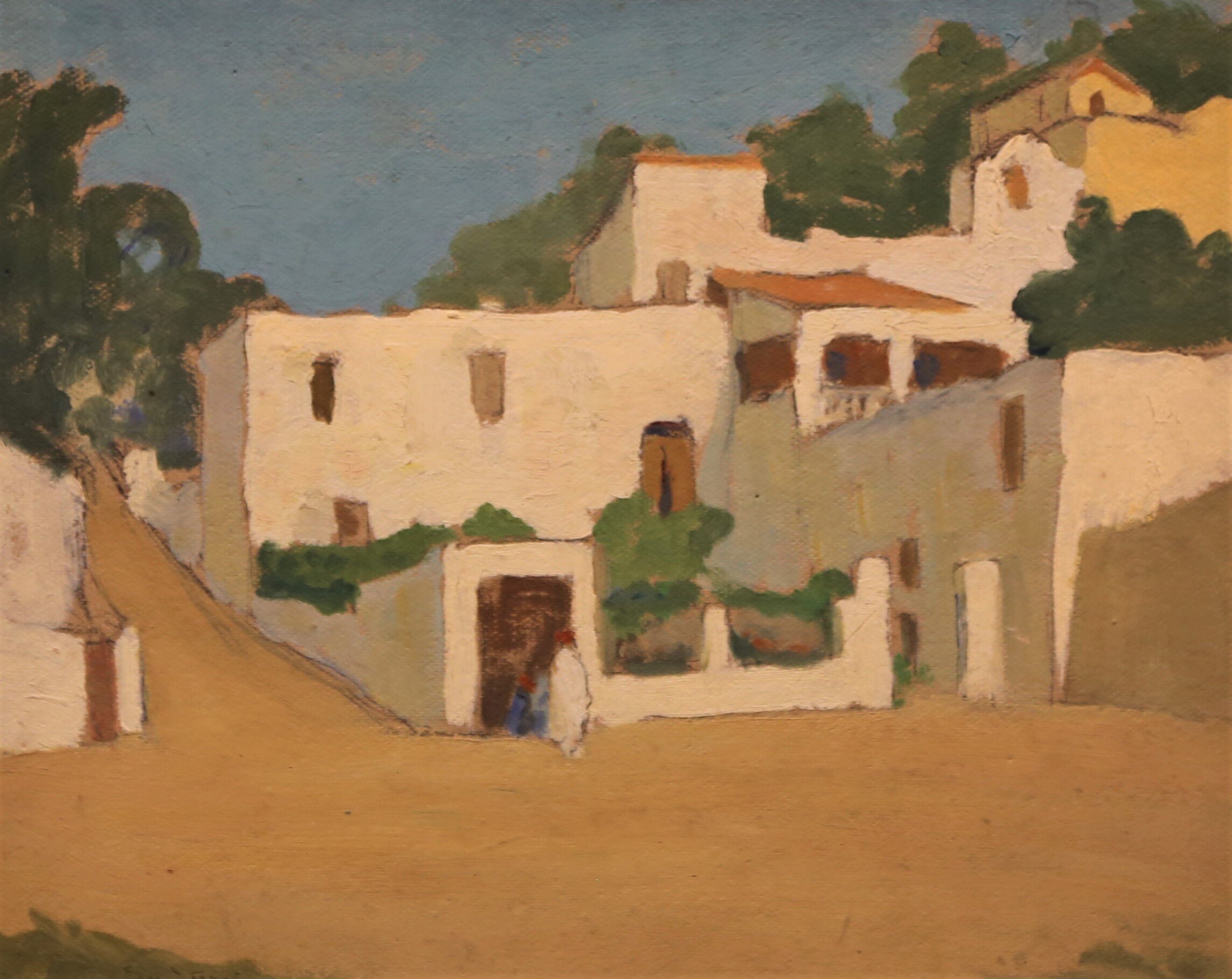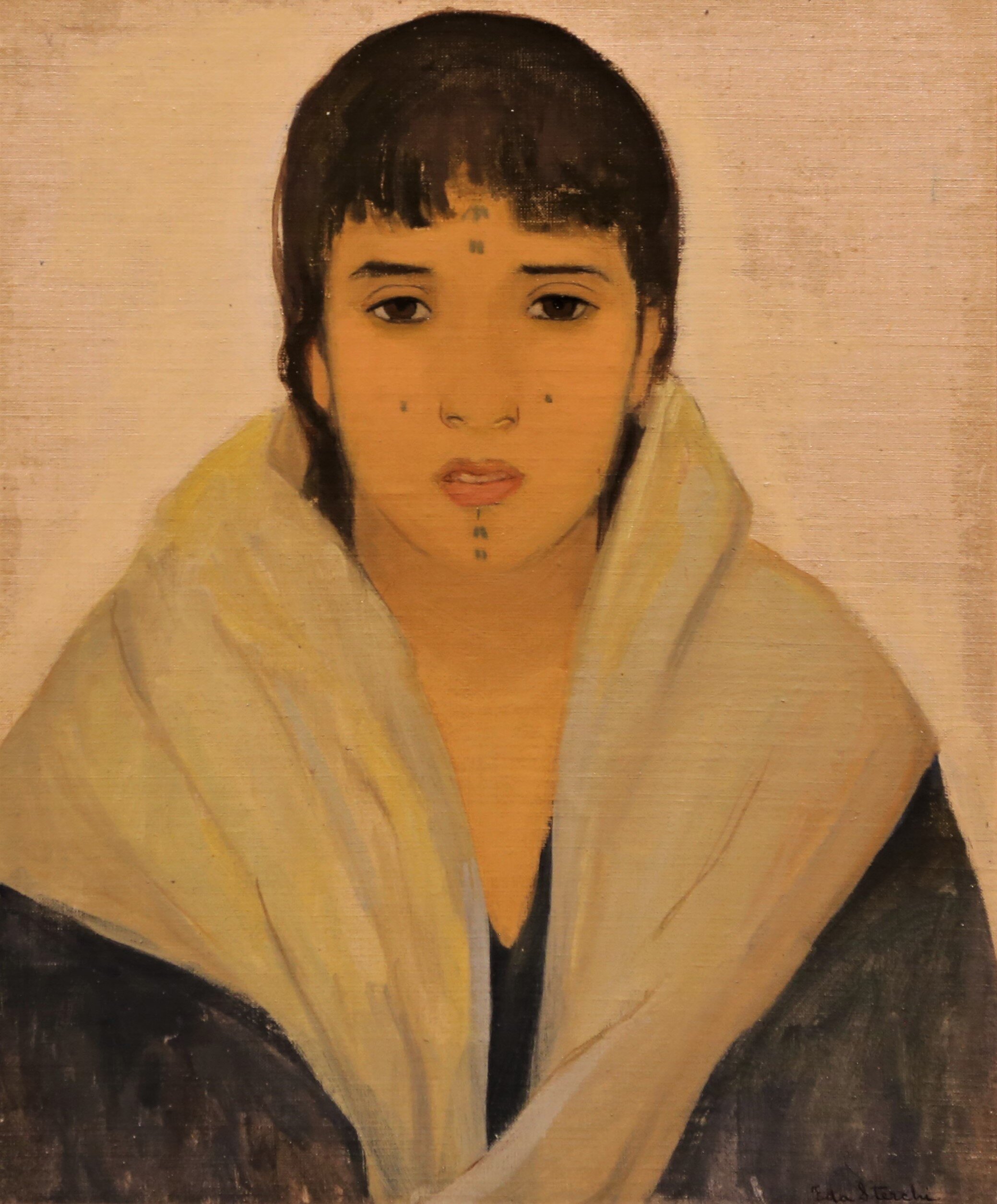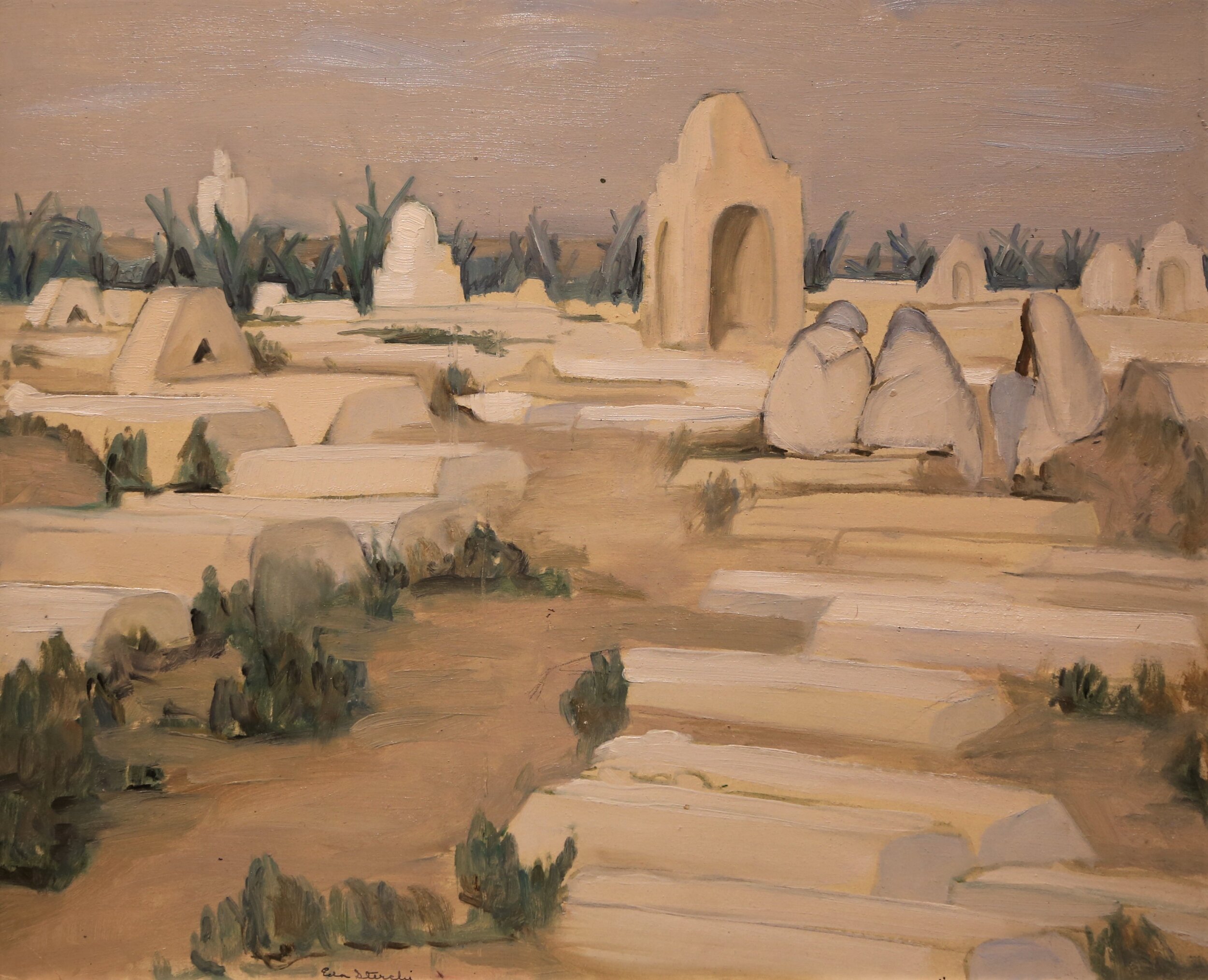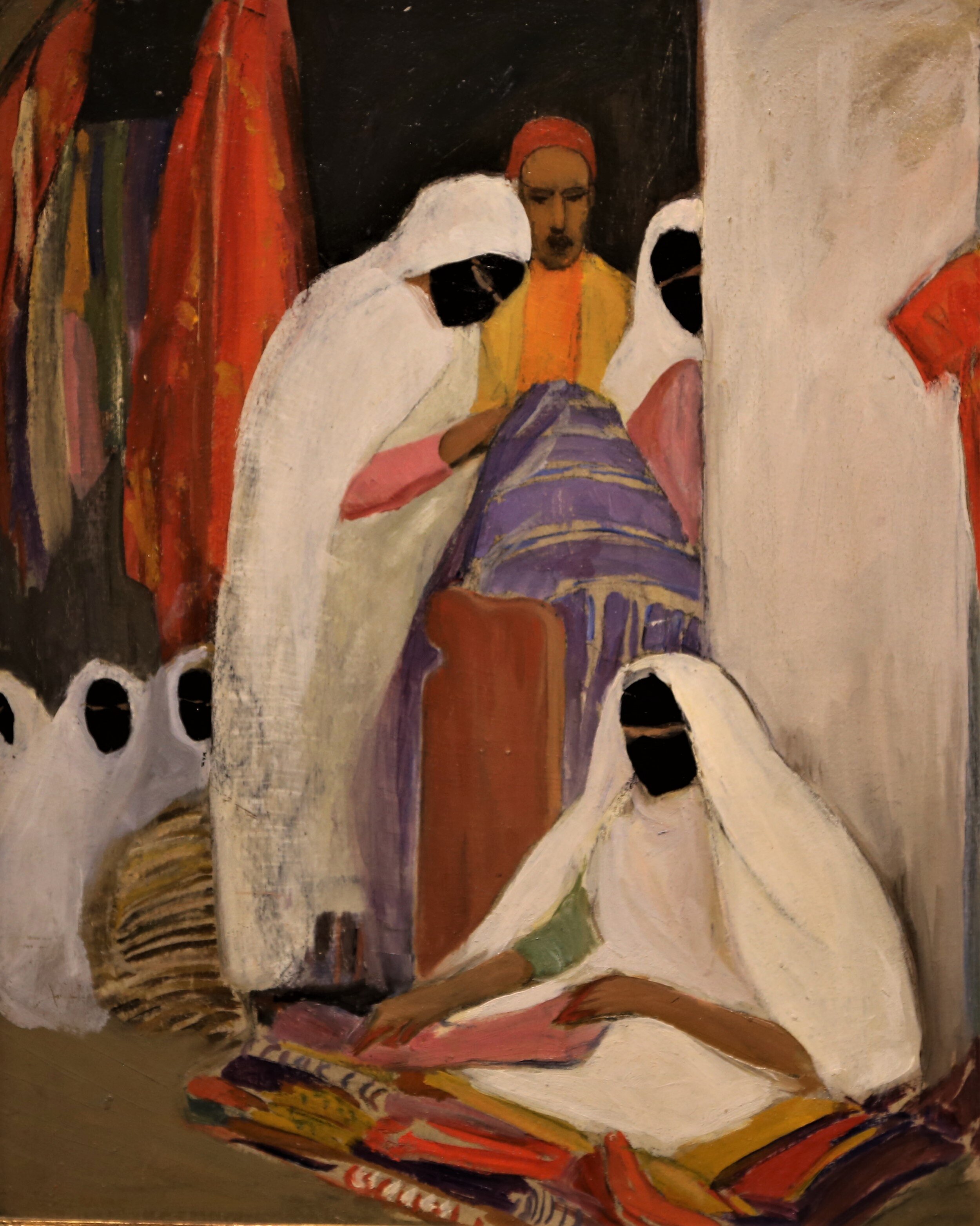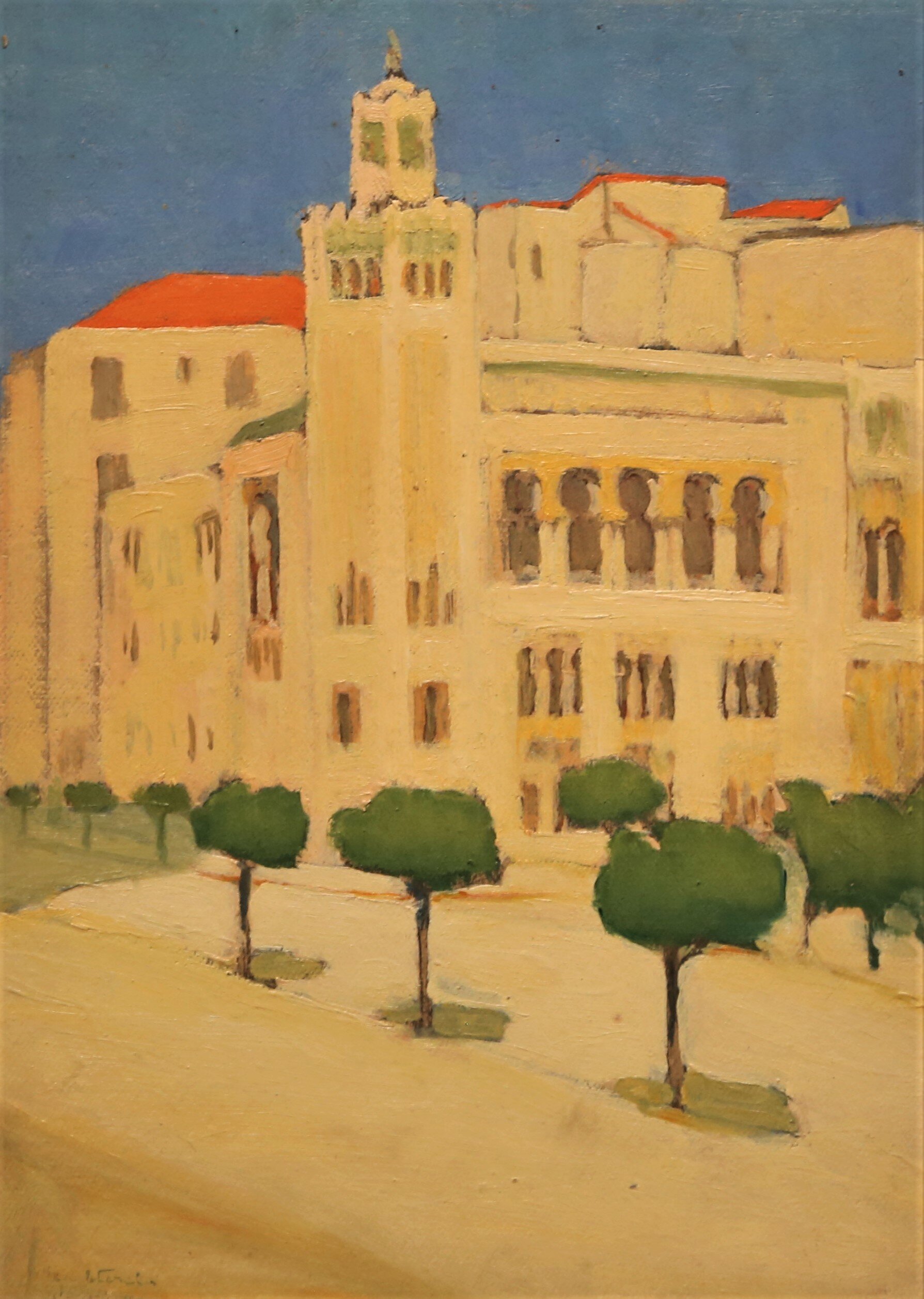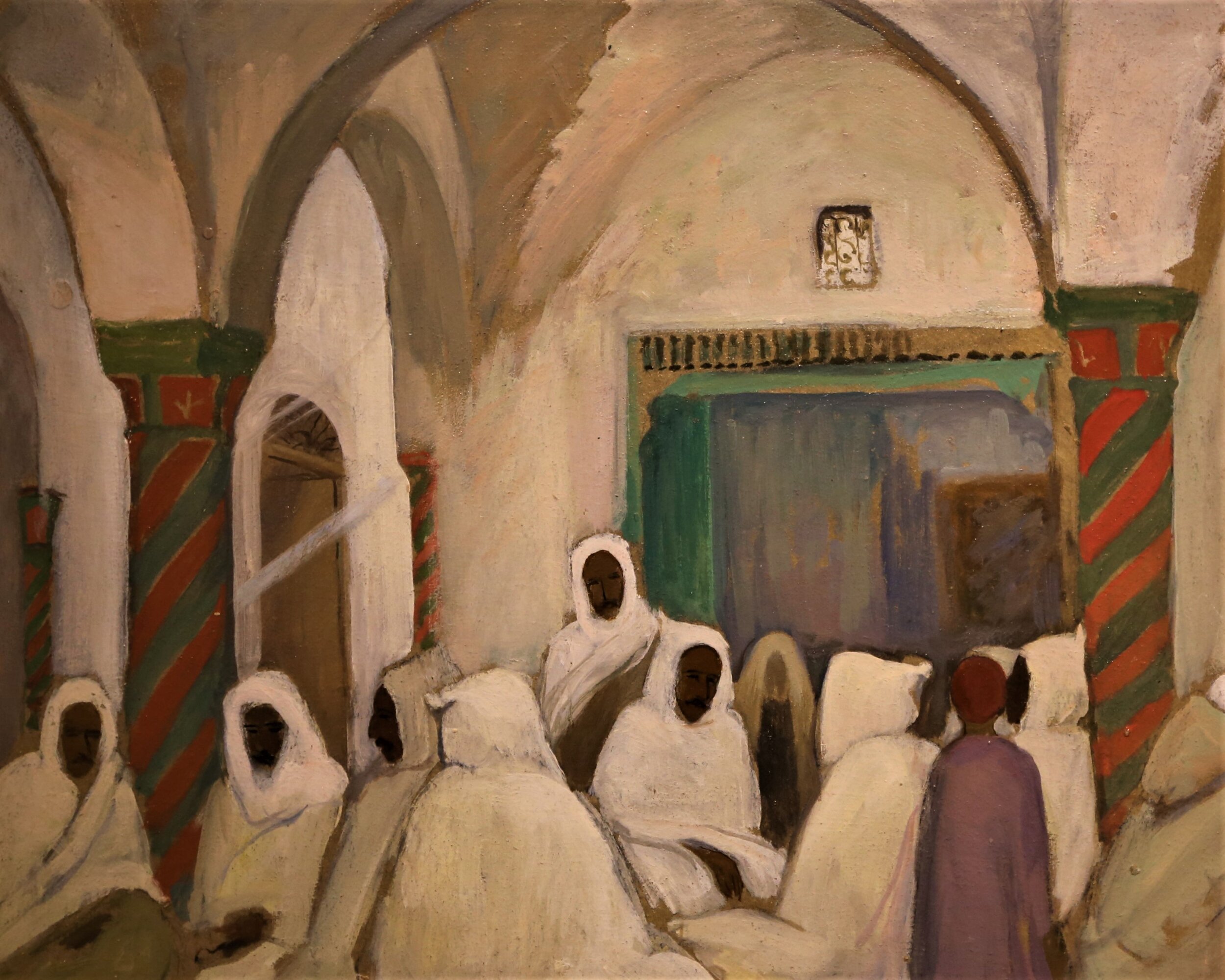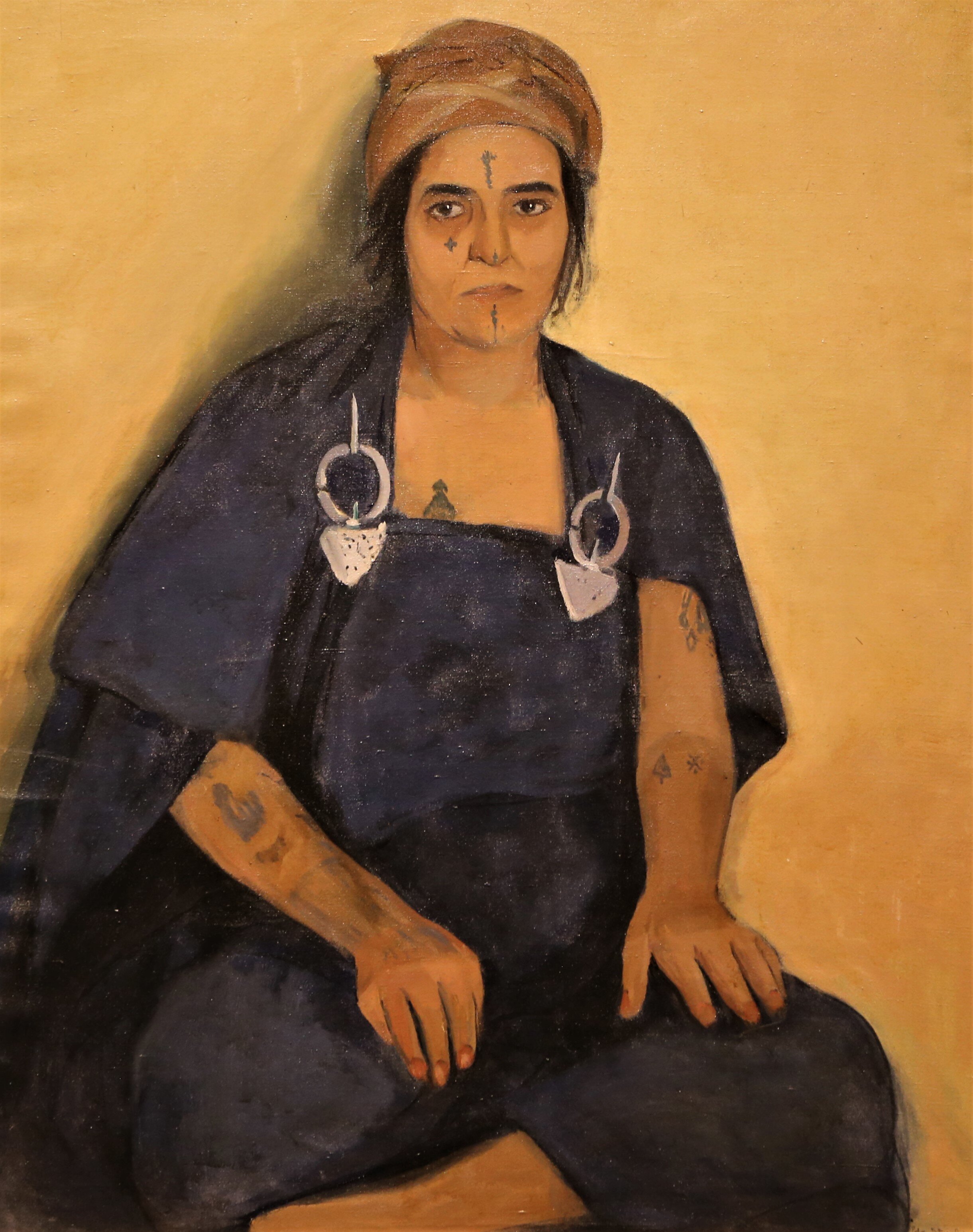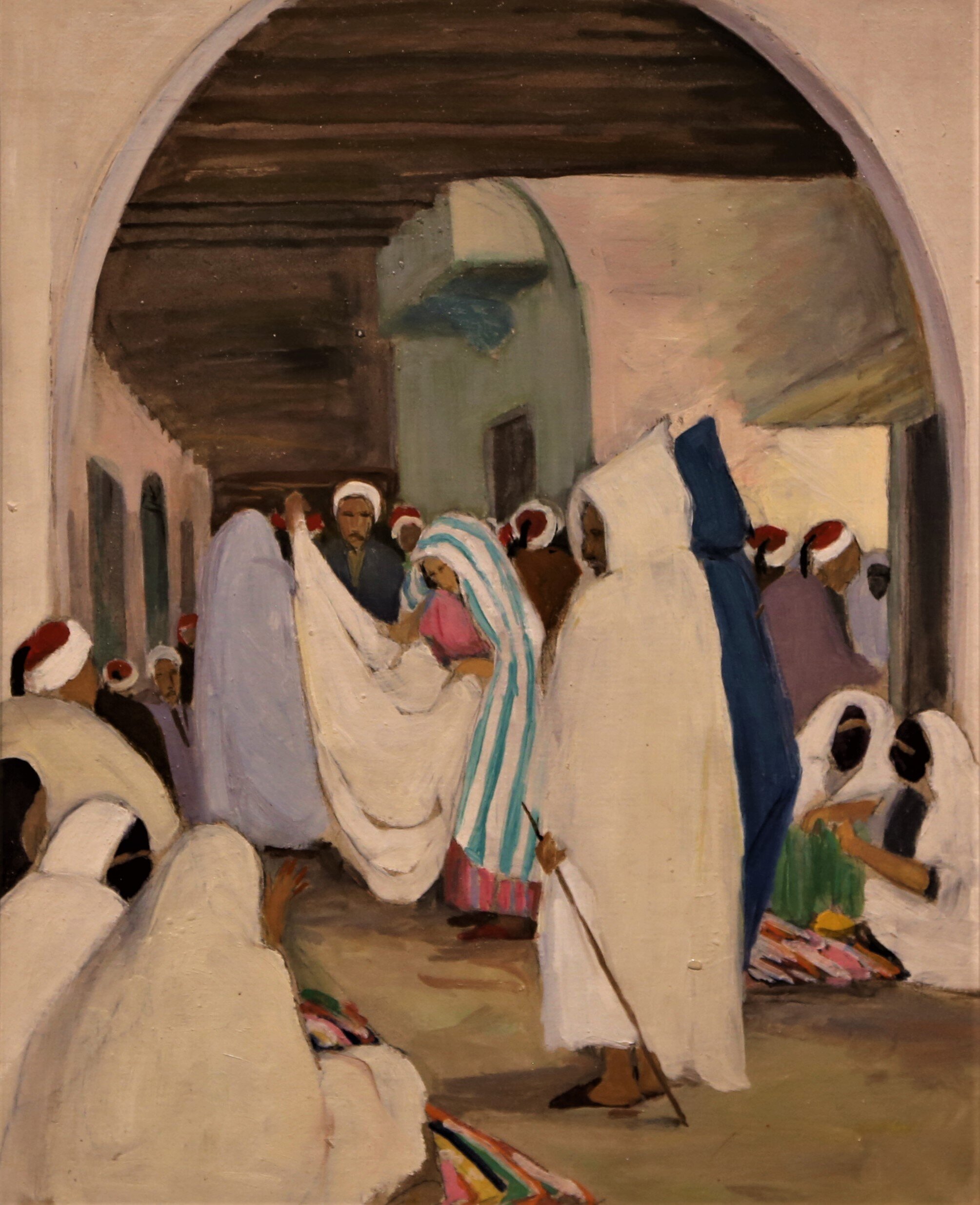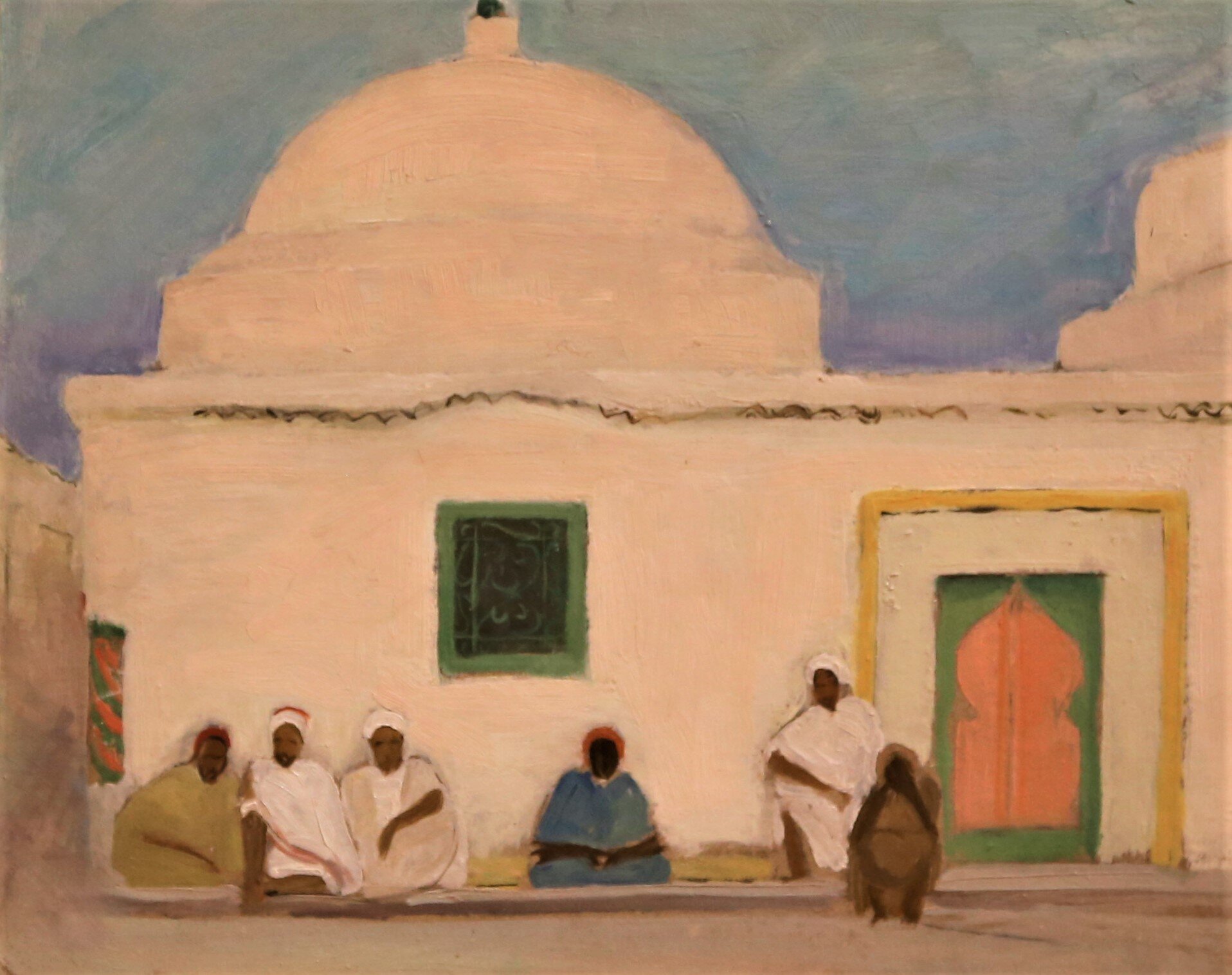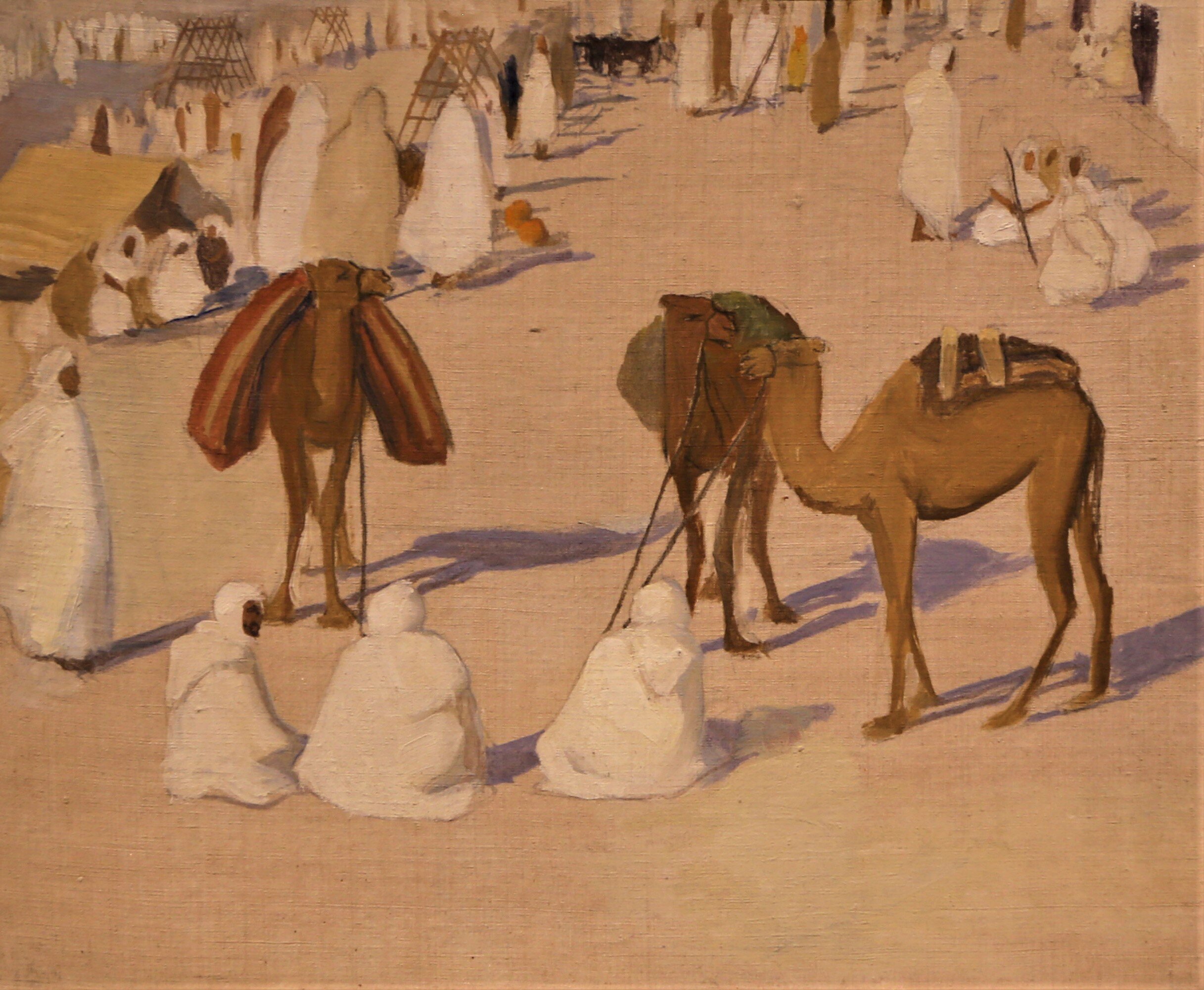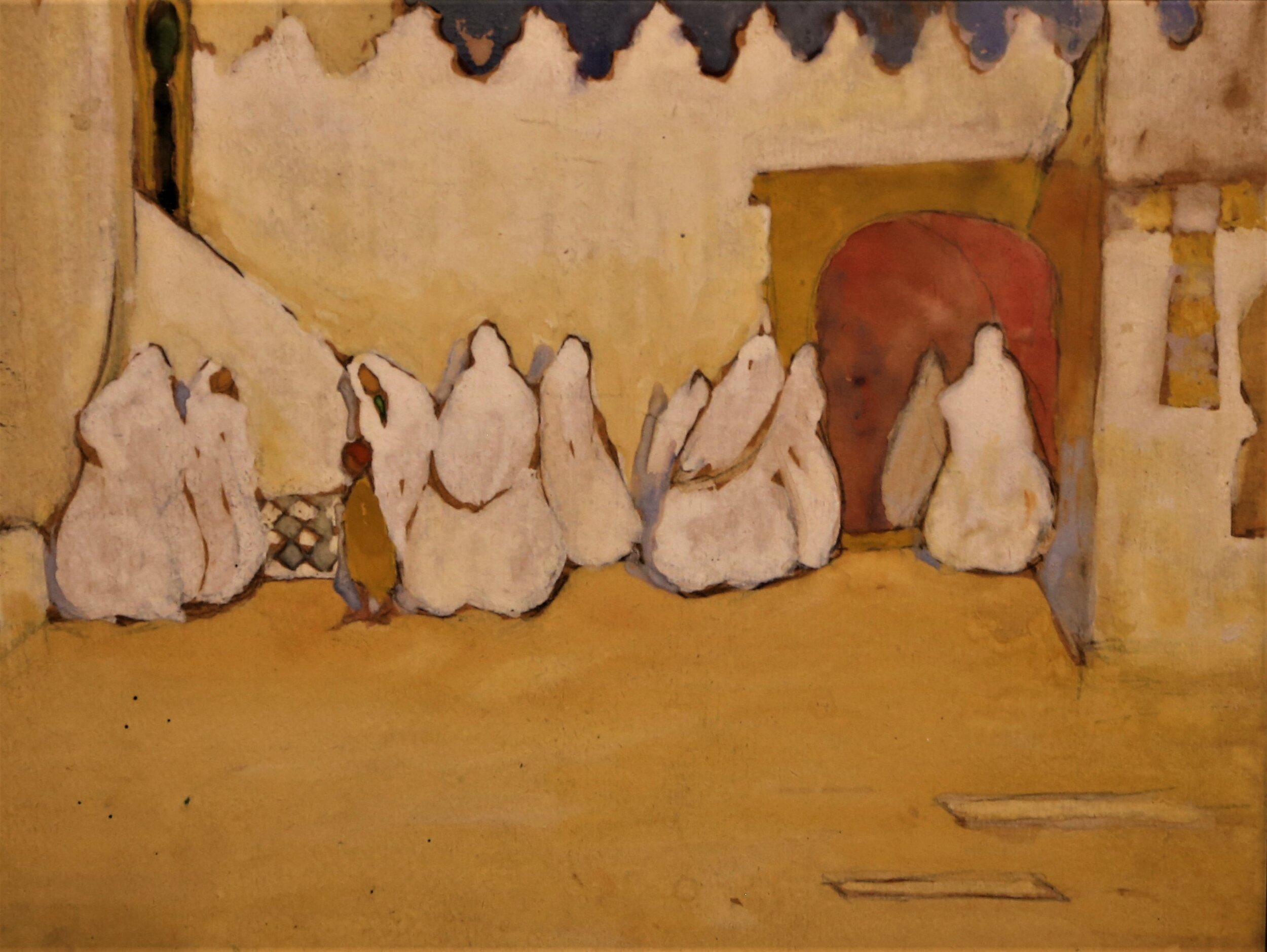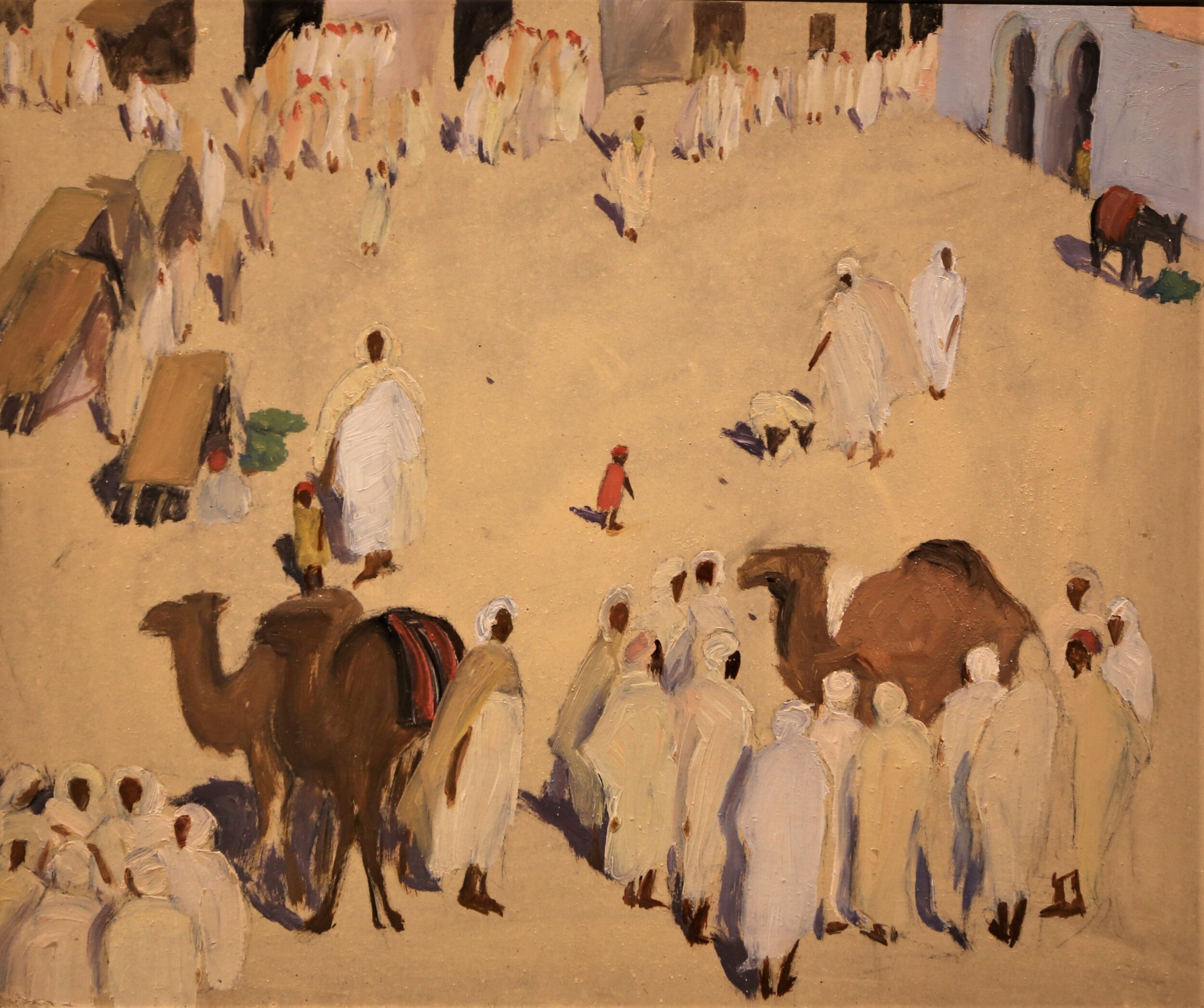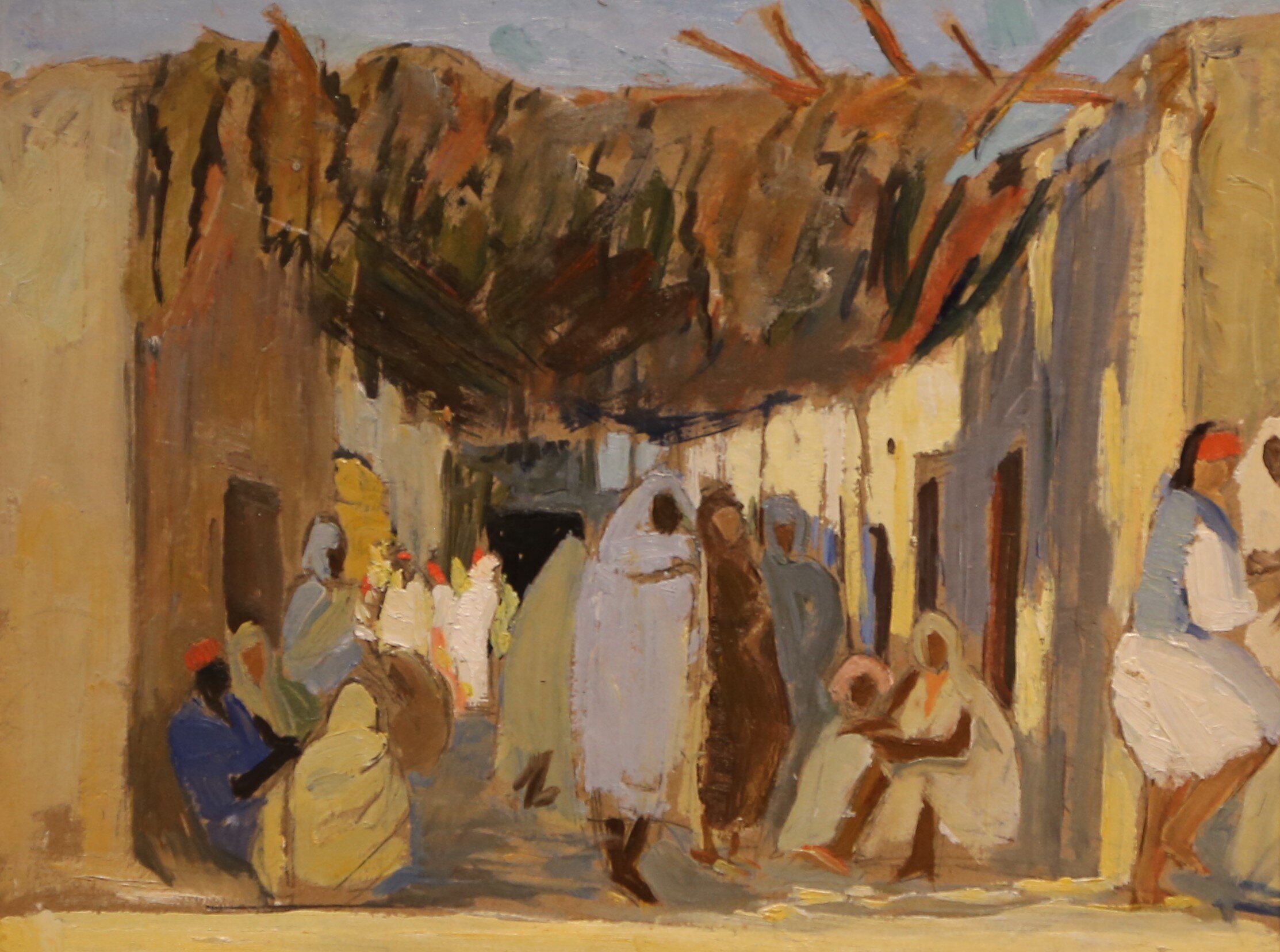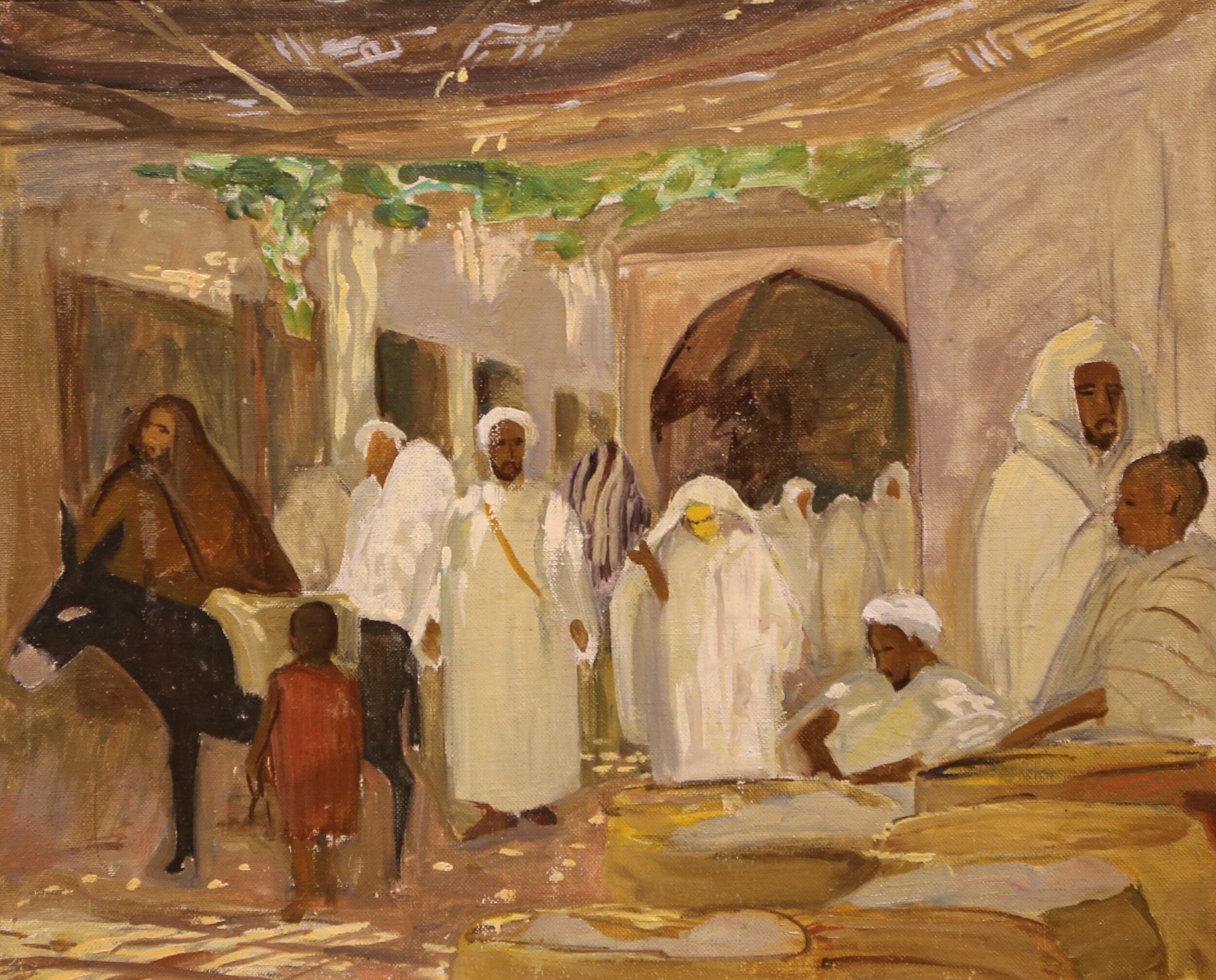Born in Olney, Illinois in 1885, Eda Elizabeth Sterchi was one of five children of Swiss immigrants Frederick and Elizabeth Urfer Sterchi. She began her studies in art in 1908 when, at the age of twenty-three, she enrolled in the Art Institute of Chicago where she focused on figure composition, watercolor, illustration, portraiture, and printmaking. While at the Institute, she was a student of the famed sculpture Lorado Taft and, in 1909, became an assistant teacher in the Saturday Sketch Class.
Sterchi was married briefly to Eugene Cole Wharf and following the divorce, she was denoted as a highly independent and somewhat unconventional woman because she was the first among her peers to cut her hair into a bob, get a divorce, and smoke a cigarette.
An inveterate traveler with an inquisitive mind and adventuresome spirit, Sterchi lived in Paris from 1910-1914 to study and work with artist Lucien Simon and taught at the Academie de la Grand Chaumiere. Her work-influenced by European modernism-met with early success; as she was included in several exhibitions in Paris.
Throughout the 1920s, Eda traveled extensively in North Africa, visiting Morocco, Algeria, and Libya. However, the country that captured her imagination was Tunisia. For twelve years, Miss Sterchi divided her time between Tunisia and Chicago. Sparking considerable interest, many publications such as the Chicago Tribune, The New York Herald Times and Times of Paris, interviewed Sterchi and wrote articles about her unique experiences abroad.
With her excellence in Arabic and the ability to immerse herself in another culture, Eda accepted a position as a guide to artists in the territory in and around Tunis, the capital of Tunisia. In recognition of her accomplishments, the Tunisian Government awarded her the title of Officer in the Order of Nichan Iktikhar, the Tunisian equivalent to the French Legion, which was rarely granted to women. Sterchi also received the violet ribbon of the Palmes Academiques from the French Ministry of Public Instruction and Fine Arts and earned a solo exhibition at the Art Institute of Chicago in 1928.
In the 1930s, Sterchi divided her time between Chicago and Olney; continued to travel abroad; and wintered at her one-room cabin residence on 160 acres in Phoneix, Arizona. She was a participant in the Public Works of Art Project (PWAP), which was a program to employ artists, as part of the New Deal, during the Great Depression. In 1941, she built an adobe home on her Arizona homestead where she spent the remainder of her life. Eda Sterchi died in October, 1969.
As a remarkably versatile artist who followed her passions and lived life to the fullest, Eda Sterchi left a legacy of her life experiences in her art. This exhibition offers a fascinating glimpse of this artist’s nomadic lifestyle and of the people and cultures she encountered throughout her years of travel. We thank Kenneth Drew and Jerry Johnson for sharing not only their enthusiasm for this compelling American artist but the treasure of their outstanding collection of her paintings.
To learn more about Eda Sterchi and the works below, please visit our YouTube channel for the virtual program: https://www.youtube.com/watch?v=YdFDtn2EVxs.
Mary Bower
The John W. Streetman III Executive Director
Tory Schendel Cox
The Virginia G. Schroeder Curator of Art












